Summary
For a sufficiently large class of formal systems a duality theorem is proved.
We consider such formal set theoriesT [2] which, at least, satisfy the following conditions:
-
1.
The theoryT contains its own (either bounded or introduced by a definition) substantive constantU, for which ⊢∀x[x∈U] or ⊢∀x[x⊂U].
-
2.
The operation of “complement”, denoted byC, is defined with respect toU.
-
3.
For any formula (resp. a term),A⊢A↔ℸℸA (resp. ⊢CCA=A), and some basic conclusions follow.
Similar content being viewed by others
References
N. Bourbaki,Set Theory, (in Russian), Moscow 1965.
Sh. S. Pkhakadze,On a class of abbreviating symbols, in:Studies in Mathematical Logic and Theory of Algorithms (in Russian), Tbilisi 1975.
Author information
Authors and Affiliations
Additional information
Allatum est die 25 Julii 1976
Rights and permissions
About this article
Cite this article
Rukhaia, K.M. A duality theorem. Stud Logica 37, 157–159 (1978). https://doi.org/10.1007/BF02124801
Issue Date:
DOI: https://doi.org/10.1007/BF02124801




